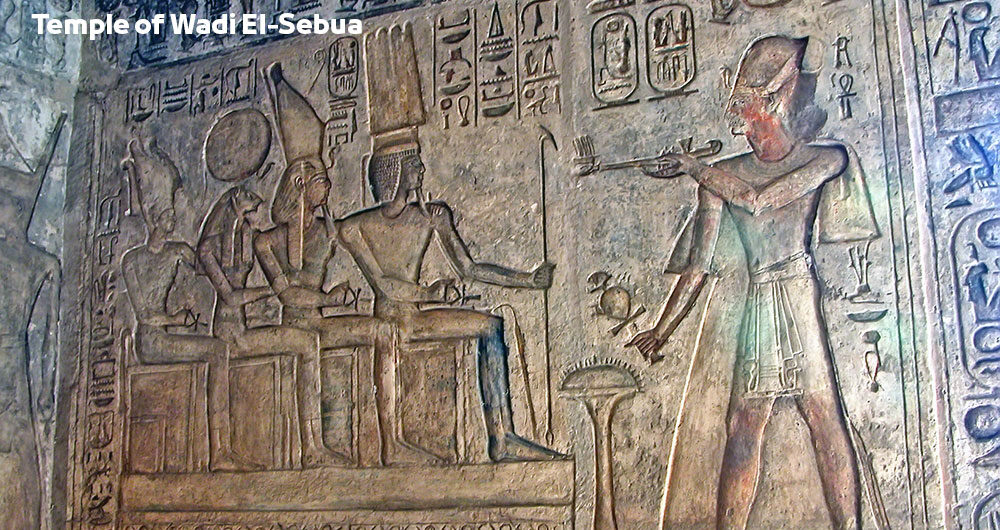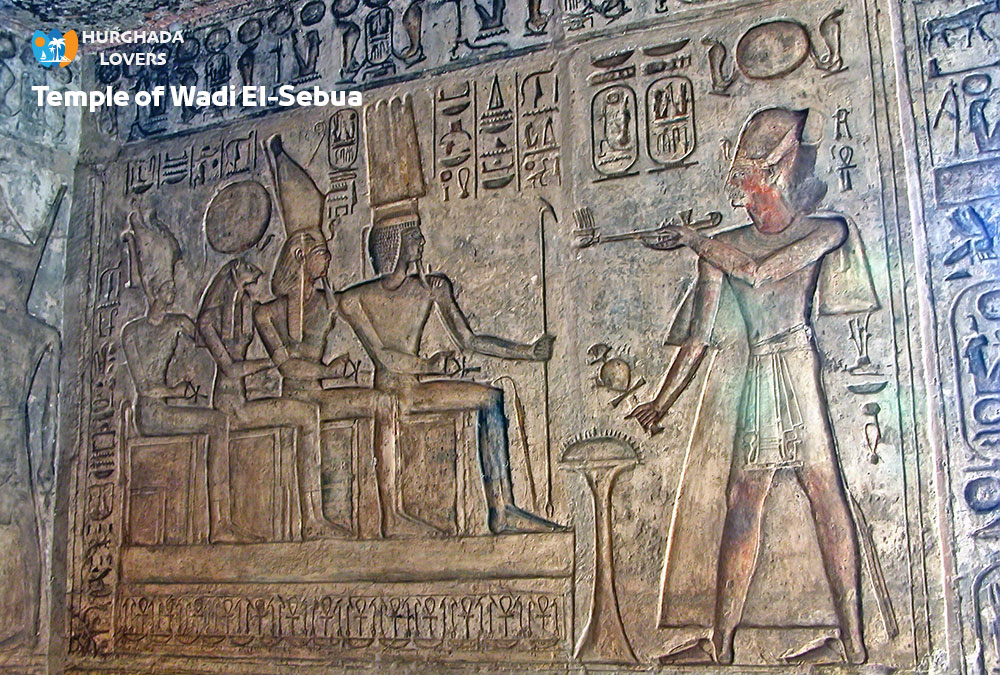Temple of Wadi El-Sebua in Aswan, Egypt – Egyptian Temples.
Facts and history of the Pharaonic civilization “Ancient Egypt History” to build the temples of Wadi El Aswad The largest ancient Egyptian Pharaonic temples in southern Egypt and what it contains of secrets of the Ancient Egypt civilization, the Pharaohs and more.
Wadi El-Sebua Temple is one of the temples that highlight the greatness of the Pharaonic state.
This temple is the second largest temple in the Nubia region after the Temple of Abu Simbel, which was built by King Ramses II of the Nineteenth Dynasty of Egypt during the The New Kingdom period.
Visitors to this temple are received by Nile boats..
Temple of Wadi El-Sebua Facts
Where is Wadi Al-Sabou located?
Wadi El-Sebu Temple is located on the eastern bank of Lake Nasser, 150 km from Aswan, and about 50 km from the High Dam.
The temple still exists but has been moved 4 km from its original location..
When was Wadi Al-Sabou built?
Wadi El-Sebua consists of two temples: the first temple was built during the reign of the Eighteenth Dynasty of Egypt during the reign of King Amenhotep III, and this temple was the first to be built during his reign..
Then King Ramses II (who has the Tomb of King Ramesses II | KV7 in the Valley of the Kings, in addition to the Temple of Ramses II in Marsa Matrouh, Om El Rehem Matrouh) restored it in the forty-fourth year of his reign, and he used Libyan workers who were captured after his victory in the war against the Libyan invaders to build it..
The second temple was built by one of the kings of the Nineteenth Dynasty, in addition to expansions he added to the first temple..
What god was worshipped in Wadi al-Sabu?
Wadi El-Sebua Temple was built for the purpose of worshipping the God Horus and the God Ra-Hor-Akhty, the most famous Egyptian deities – Ancient Egyptian gods and Goddesses in the Ancient Egyptian religion. Later, the deity was changed to become the God Amun.
During the Greek-Roman era, the drawings of the god Ra and the God Aton were covered with layers of shell, so the temple was transformed into a Christian church in the Coptic period since the fifth century AD during the period of Roman persecution of the Copts.
The face of the god Amun outside the temple was also transformed into Saint Peter.
This continued for centuries until the temple was discovered, the shell was removed, and the Pharaonic drawings on the walls were discovered..
Structural description of Wadi Al-Sabou
Wadi El-Sebou Temple was named after the presence of two parallel rows of statues at the entrance to the temple, resembling a lion-headed Sphinx. They were created to guard the temple..
Most of the temple was built of stone (Ancient Egyptian Metallurgy), except for the sanctuary and the inner vestibule, which were carved into the rock..
Upon arrival at Wadi El-Sebou Temple, we find two statues of Ramses II in the front. Upon entering, we find that the Wadi El-Sebou Temple from the inside consists of a rock hall 3 meters long and 2 meters wide.
The ceiling of the temple rises with 21 square columns, indicating the development of Architecture in ancient Egypt and the art of Sculpture in Ancient Egypt.
Opposite this room is a large courtyard built of rocks. To the southwest of this courtyard is a storage room, and upon reaching its end we find a staircase leading to a balcony..
There is another monument built of mud bricks, this monument contains four other statues of the Sphinx but with the head of a falcon, and each statue carries between its front legs a smaller statue representing Ramses II, and Egyptology and archaeologists have interpreted this as the pharaoh’s desire to live a long life..
The murals in the temple depict King Ramses II and the god Ra-Horakhty as if they were one person, as in the myths of the pharaohs “Egyptian Mythology” and Ancient Egyptian Literature, reflecting the king’s power. There are also drawings of King Ramses II’s wars, and pictures of him striking enemies and prisoners in front of the god Ra-Horakhty to indicate his power and the power of the Military of ancient Egypt.
Outside the temple there are remains of a wall that surrounded the entire temple from the outside..
Restoration and rescue of Wadi Al-Sabou
After the construction of the High Dam and because of the threat of flood waters to submerge Wadi El-Sebou Temple, the temple was dismantled from its original location and moved to a place about 4 kilometers away from the original site.
that this new area became a complex of three temples (Wadi El-Sebou, El-Dekka, and El-Mahraqa). This was in 1964 during the reign of President Gamal Abdel Nasser in joint cooperation between the Egyptian Ministry of Tourism and Antiquities and the United States of America..
How much is a ticket to visit the Black Valley?
Note: Facts and secrets of the history will be added soon…
Hurghada Excursions Lovers, Best Travel Agency in Hurghada to provide daily tours to visit the Tourist attractions of Luxor by Hurghada to Luxor Tours and Hurghada to Pyramids Trips. Book online when you come to Hurghada, El Gouna, Sahl Hashish, Makadi Bay, Soma Bay, Egypt Tours Packages.
Temple of Wadi El-Sebua in Nubia, Aswan, Egypt | Facts Temples Of Wadi Es-Sebua , History

